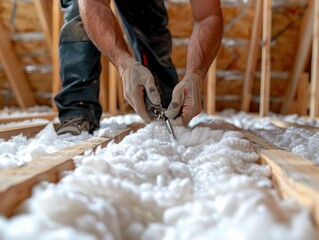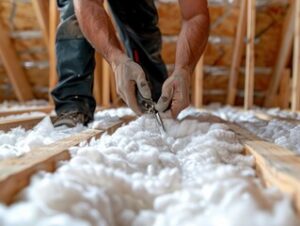If pests transmit disease, devalue property, or disrupt natural ecosystems, we may feel it’s necessary to control them. However, deciding when to take action depends on a specific threshold for each situation. Contact Pest Control Abbotsford BC now!
In the outdoors, avoid leaving crumbs and spills; clean bird feeders and baths regularly; and trim brush and firewood piles away from buildings. Indoors, seal cracks and crevices that pests can use to enter.

Pest identification is the first step in a successful integrated pest management strategy. Accurate pest identification can help you determine basic information, such as the species and stage of the pest. This is important because many pests change appearance as they go through their life cycles. An immature beetle, for example, may look like a caterpillar or worm.
Likewise, a weed seedling will often look different than the mature plant it will become. This makes proper pest identification critical. In addition, the weather and seasons can affect how pests look. Pests in the rainy season, for example, will often look much larger than those in the winter. Inspecting your facility on a regular basis can help you identify and respond to infestations quickly and effectively.
The most effective way to prevent an infestation is to keep pests out of your building. This means examining doors, windows and vents regularly for any signs of a pest infiltration. Insects and rodents will leave behind grease marks, footprints or a trail of droppings that can indicate the location of an entrance point. If you notice any of these, make sure to clean them immediately in order to deter further pest activity.
Once you know what type of pest you are dealing with, it is easier to apply the appropriate control measures. This may involve pesticides or non-chemical pest control strategies, such as encirclement techniques. Proper pest identification can also help you determine whether your problem is sporadic or continuous. Sporadic pests tend to occur in high numbers and can be difficult to control, while continuous pests usually reproduce year-round and require consistent monitoring.
There are a number of online pest identification resources, including websites, books and field guides. Some of these resources have photographs that may help you determine the species of pest you are seeing. Other resources will provide detailed information about the habits, habitats, threats, and signs of an infestation of each pest species. In addition, some of these resources include a description of the damage that each pest causes. The final step in pest identification is to compare the characteristics of your pest with those of the pest species listed in the resource you are using.
Pest Control Tactics
There are several ways to control pests. They include prevention, suppression, and eradication. The best approach is to use a combination of methods and to avoid using chemicals whenever possible. Prevention includes inspecting and proactively sealing cracks, and caulking, around doors, windows, and other utility penetrations. It also means regular cleaning to remove food and shelter. It is a good idea to keep garbage and other debris away from the house.
Biological controls use predation, parasitism, herbivory, and other natural mechanisms to control pest populations. This is a sustainable, natural way to reduce pest damage, but it may take some time for the organisms involved to become established and provide effective control.
Chemical control involves the use of chemical agents to kill or inhibit the growth of pests. These chemicals can be natural products, synthetic mimics of natural products, or fully synthetic materials. They are typically formulated to kill or harm the pest and to disrupt its life cycle in some way, such as by blocking hormones, stopping reproduction, or changing the structure of cells.
Mechanical controls use traps, screens, barriers, and fences to exclude or restrict pest movement. They may also alter the environment in some way, such as by blocking light or water or by increasing or decreasing humidity.
Regulatory controls are applied when pests cause or are expected to cause significant damage to human health, agricultural crops or plants, animals, and forests. Quarantine and eradication programs are directed by government agencies according to state and federal regulations.
Integrated pest management (IPM) is the preferred approach to managing pests. It uses all appropriate tactics in a plan or strategy to reduce pest numbers and damage to an acceptable level, with minimal disruption to the living organisms and nonliving surroundings at the treatment site. Relying on a single tactic or on a mixture of tactic without considering the whole situation can lead to resistance by pests to the agents used, or to other adverse effects on the environment. The goal is to reduce the need for pesticides, which are harmful to humans and the environment.
Pesticides
Pesticides are chemical substances that control or eradicate harmful organisms such as insects, weeds or diseased plants. They can be found in nature or produced by man. They may be sold as liquids, solids, or gases. They are classified by their active ingredient and how they interact with the target pest.
All pesticides are toxic to some degree, but the risks are increased with repeated exposure. They may also be harmful to other organisms, such as fish, birds or mammals, or to the environment. Pesticides can be used to kill or deter pests by direct contact, to disrupt the nervous system, or to cause other physiological changes. They are usually grouped into “families” based on their mode of action, and a single product may contain chemicals from several families.
Insecticides, herbicides and fungicides kill pests by attacking their skin, membranes, tissues or nerves. The types of pests controlled by each family differ. Some are acutely toxic to humans (insecticides), while others pose more chronic health hazards (herbicides and fungicides).
Many pesticides are now in short supply because of the environmental problems associated with their use, such as reduced invertebrate diversity in streams, loss of habitat for many species and contamination of groundwater supplies. Also, the use of insecticides often results in pest resistance. This can necessitate the use of more toxic chemicals or a different pesticide that is more effective at lower rates.
When using pesticides, follow the label directions to avoid harming people, pets and the environment. When mixing or applying pesticides, wear rubber gloves and protective clothing. If a pesticide solution comes in contact with your eyes, rinse them immediately with water. Keep children, pets and other non-target organisms away from spray areas. Observe the time period listed on the pesticide label for reentering the area after spraying.
If you plan to use pesticides on your property, check with your local government for bylaws regarding the use of pesticides on residential or agricultural lands. Municipalities may have restrictions on the use of cosmetic pesticides, such as those used to make lawns and gardens look greener.
Choosing a Pest Control Company
When choosing a pest control company, it’s important to take your time and research the options available to you. You want to find a reputable, experienced company that offers a range of services and can effectively manage your specific pest problem. You should also check that they are licensed and insured, and ask about their safety measures, pricing structures, and contracts.
Check the company’s reputation, both online and in your social circle. Look for reviews on sites such as Google, Yelp, and Angi, and see what others have said about their experiences. You should also ask friends and family for recommendations.
A good pest control company will start with a thorough inspection of your property to determine the extent of your infestation and identify entry points, nesting areas, and other signs of pest activity. From here, they should create a customized treatment plan to get rid of the pests using targeted treatments both inside and outside your home.
Some of these targeted treatments may involve spraying, baiting, or dusting. They may also involve trapping, or other non-toxic methods such as vacuuming. Some of these methods can be used in combination, depending on the type of pest you’re dealing with.
When choosing a pest control company, you’ll want to make sure they’re using safe, low-toxicity chemicals that won’t harm your family, pets, or the environment. You should also ask the company about their safety measures, such as wearing protective equipment when handling pesticides, and their insurance coverage.
In addition to the safety measures, you should find out if the pest control company has any certifications from professional associations, such as the National Pest Management Association GreenPro or the National Entomology Scent Detection Canine Association. This is a sign that they’re committed to high standards and are willing to go the extra mile for their clients. You’ll also want to check whether the company carries general liability and worker’s compensation insurance, which protect you in case an employee is injured on your property. This is particularly important if they’re going to be working with dangerous chemicals.


